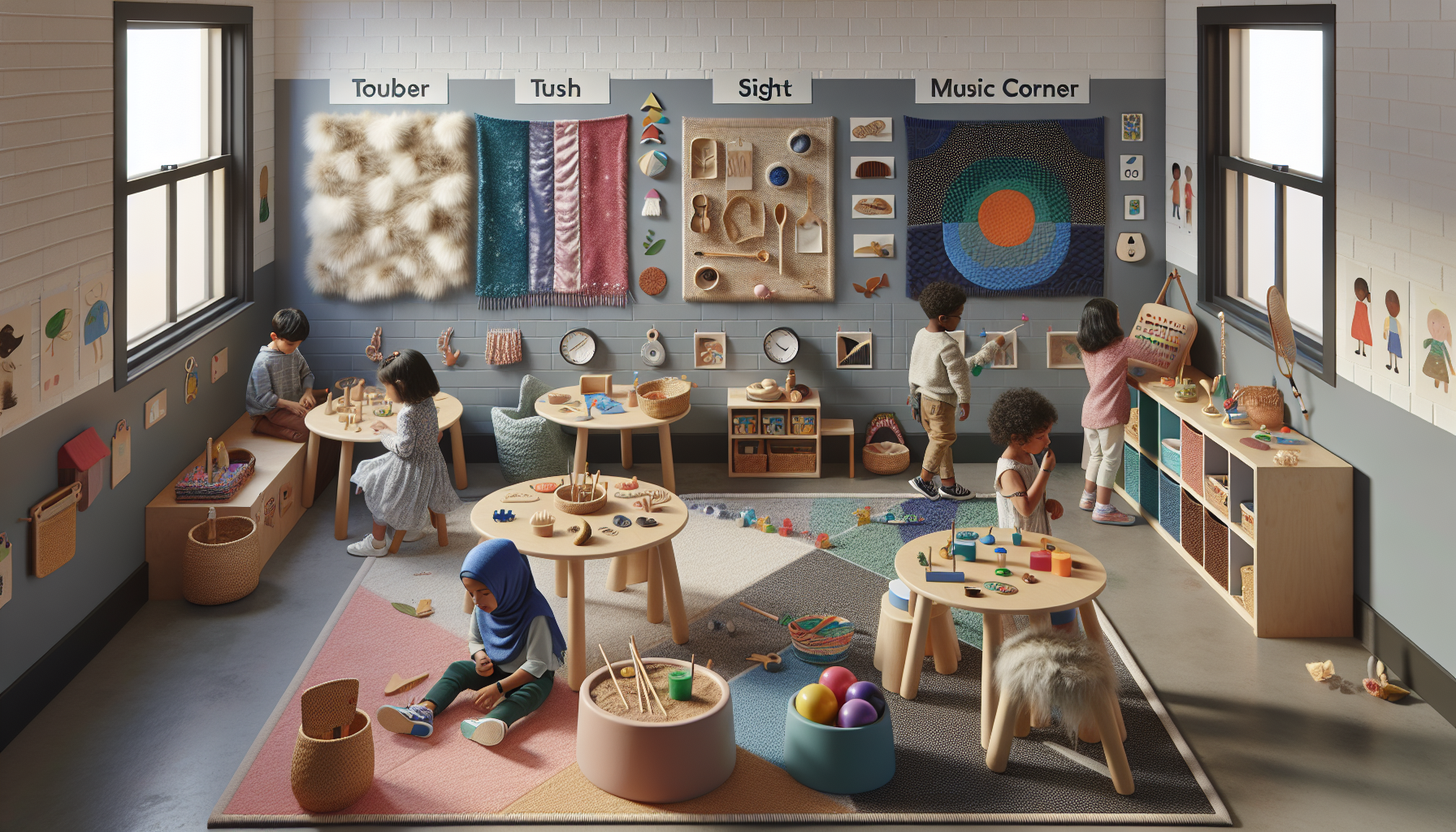Sensory awareness is a crucial aspect of early childhood development. As children grow, they learn about the world around them primarily through their senses. The early years of a child’s life are a critical period for sensory development, with profound implications for cognitive, social, and emotional growth. In this comprehensive guide, we will explore the importance of sensory awareness in early childhood education, strategies for integrating sensory experiences into learning, and the benefits these practices have on young children.
Understanding Sensory Awareness
Sensory awareness refers to the recognition and understanding of sensory information that children perceive from their environment. This encompasses the five traditional senses—sight, sound, touch, taste, and smell—as well as proprioceptive (sense of body position) and vestibular (sense of balance) senses. Developing sensory awareness is fundamental for children, as it contributes to a myriad of developmental milestones, including motor skills, language acquisition, and problem-solving abilities.
For children, sensory experiences are not just about processing stimuli; they are also about the joy of exploration and discovery. Sensory-rich environments in early childhood settings can cater to diverse learning styles and needs, fostering an inclusive atmosphere that benefits all students. For more in-depth information on the overall importance of sensory health, consider reading Sensory Health.
The Role of Sensory Play in Learning
Sensory play is a type of activity that stimulates children’s senses and encourages them to explore and investigate. It can be as simple as playing with sand or water, or as complex as engaging with sensory integration tools. Sensory play offers a natural, informal way of learning, allowing children to process information through hands-on experiences.
Incorporating sensory play in early childhood education can significantly enhance learning outcomes. It helps solidify abstract concepts by providing concrete experiences, facilitates language development through descriptive vocabulary, and encourages scientific thinking by involving children in experiments and observations.
Sensory Integration in the Classroom
Creating a sensory-friendly classroom is crucial for accommodating children with diverse learning needs, including those with Sensory Processing Disorder (SPD). A sensory-friendly classroom provides a space where stimuli are regulated to help children remain focused and comfortable. Some innovative features of such classrooms include quiet zones, sensory bins, and tactile paths.
For educators looking to create a more inclusive learning environment, the article Creating Sensory Friendly Classroom Settings for Diverse Learners offers valuable insights.
Strategies for Enhancing Sensory Awareness
To promote sensory awareness in early childhood education, educators can employ various strategies:
- Multi-sensory Learning: When lesson plans engage multiple senses, children are more likely to retain information. This could involve reading a story while providing tactile or olfactory experiences that relate to the narrative.
- Sensory Areas: Designated areas filled with sensory activities tailored to each sense can provide children with opportunities for exploration and self-directed play.
- Nature Exploration: Outdoor learning and nature play are excellent ways to engage children’s senses while fostering an appreciation for the environment.
- Artistic Expression: Art projects allow children to engage their senses while exploring colors, textures, and patterns.
For those interested in integrating sensory tools into cognitive development, the resource Integrating Sensory Tools in Cognitive Development Programs provides a wealth of information.
Benefits of Developing Sensory Awareness
The benefits of developing sensory awareness in young children are manifold:
- Enhanced Learning: Sensory experiences can help solidify memory and improve attention span, leading to better academic performance.
- Emotional Regulation: Sensory play can have calming effects, helping children manage their emotions and cope with stress.
- Social Skills: Group sensory activities foster cooperation and communication among peers.
- Physical Development: Activities like climbing or playing with dough can improve fine and gross motor skills.
For more on the role of sensory environments in patient and student care, Role of Multisensory Environments in Patient Care is an excellent resource.
External Resources for Further Reading
To deepen your understanding of sensory awareness and its impact on learning, here are some niche resources:
- National Association for the Education of Young Children (NAEYC) provides a comprehensive look at sensory play and its role in the educational curriculum.
- Zero to Three offers insights into choosing toys that promote sensory and cognitive development for toddlers.
- Child Mind Institute explains sensory processing issues and offers guidance on supporting children who face these challenges.
Conclusion
Developing sensory awareness in early childhood education is not just about enhancing academic learning; it’s about nurturing well-rounded individuals who are in tune with their environment and their own sensory experiences. By integrating sensory play and creating sensory-friendly learning spaces, educators can provide a foundation for lifelong learning and well-being.
As we continue to understand the profound impact of sensory processing on children’s development, it is clear that prioritizing sensory awareness in early childhood education is not just beneficial, it is essential. Through thoughtful implementation of sensory strategies in the classroom, we can ensure that all children have the opportunity to reach their fullest potential.



